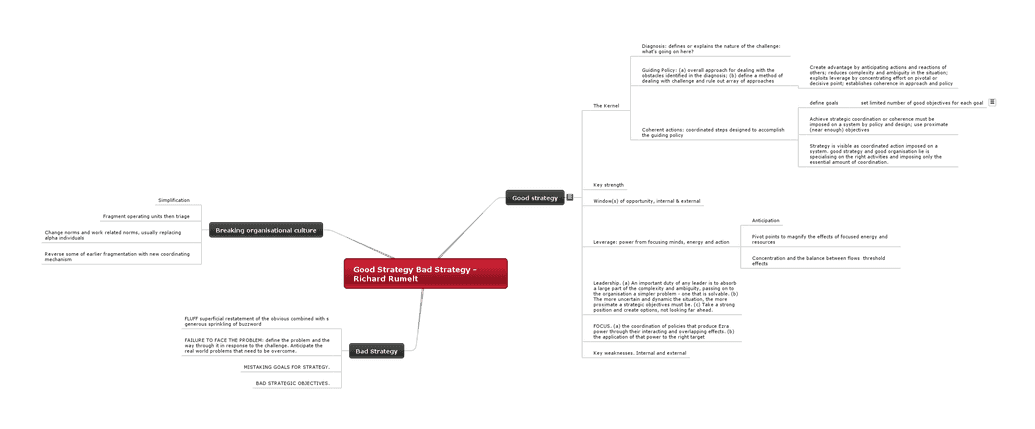This post is part of a series called Managing the Professional Service Firm.
Managers of professional service firms face many challenges. This series attempts to provide a helpful collection of resources, concepts, and frameworks for understanding and addressing them.
A problem well stated is a problem half-solved. Charles Kettering
The first step towards effective leadership is absorbing the complexity and ambiguity of the situation. This will allow the leader form an effective strategy, inspire action on the part of others, and negotiate better deals.
This article seeks to provide a concise explanation of the start with why concept and the branching advantages it creates for a manager of a professional service firm. This article will form a foundation for the next several articles in this series.
Start With Why
To fully understand the challenge - and not simply jump into the fray - empowers the leader with the knowledge necessary to make the best decisions. Starting with Why is the first step in at least three branches of knowledge important for the leader of an organization:
- Craft Effective Strategies
- Inspire Action on the Part of Others
- Negotiate Win-Win Outcomes
Strategy
Rumelt explains, that an important duty of any leader is to absorb a large part of that complexity and ambiguity, passing on to the organization a simpler problem—one that is solvable.
A great deal of strategy work is trying to figure out what is going on. Not just deciding what to do, but the more fundamental problem of comprehending the situation. A good strategy honestly acknowledges the challenges being faced and provides an approach to overcoming them. Richard Rumelt, "Good Strategy, Bad Strategy"
Diagnosing the situation is the first of 3 ingredients that form the kernel of a good strategy. The talented leader will use this diagnosis to identify the critical issues in the situation—the pivot points that can multiply the effectiveness of effort—and then focus action and resources on them.
[caption id="attachment_1460" align="alignnone" width="2499"]
 Mind Map of Richard Rumelt's book, "Good Strategy, Bad Strategy"[/caption]
Mind Map of Richard Rumelt's book, "Good Strategy, Bad Strategy"[/caption]
Inspiration
By diagnosing the situation first the leader does not only learn about the world around him, he learns about herself. A good leader internalizes the values of her organization and has deep empathy for her customers, coworkers, and partners. This is important because it gives the talented leader the capacity to inspire.
There is a deep body of knowledge around the inspirational leader. It is separate from strategy but also vitally important because it amplifies the effectiveness of effort.
One of the most popular ted talks of all time was performed by Simon Sinek on this subject (video below). He asserted that an organization is formed by 3 concentric circles. The most inner circle is Why, encompassed by How, which in turn is encompassed by What. Sinek asserted that while most organizations understand what they do, and many organizations understand how they do it, very few understand Why they do it.
He goes on to contend that the most successful companies, particularly those that are successful over the long term, are so because they "Start with Why". They internalize the value they bring to the relationships in their organization, with their customers, and with their partners.
People don’t buy WHAT you do, they buy WHY you do it. Simon Sinek, "Start with Why: How Great Leaders Inspire Everyone to Take Action"
[ted id=848]
Win-Win
Finally, managers of a professional service firm are often negotiating, whether with clients, co-workers, or partners. Its good business in general, but perhaps in particular the professional service firm, that you maintain great relationships. To do this a leader needs to always seek to create Win-Win outcomes.
The crux of good negotiation is to get beyond positions and focus instead on interests. Positions are what you want. Interests are why you want it.
Interest based negotiation can often lead to unexpected outcomes where all parties walk away satisfied.
To craft win-win outcomes through interest based negation, it is critical to first understand the situation and how it is perceived by its participants. Then you are more likely to find common ground and predict what actors will think and do.
[slideshare id=895226&doc=getting-to-yes-excerpt-1231277214472729-2]
Summary
If you lead a successful service firm then you probably know what you do and how you do it. Very few organizations know why, but those that do are able to leverage that knowledge for long term competitive advantage.
The role of the leader is to take ambiguity and complexity and distill it down to simple problems. A good diagnosis of the situation will help guide actionable strategy, will help internalize values that inspire action in others, and provide insight to craft win-win outcomes for lasting relationships.